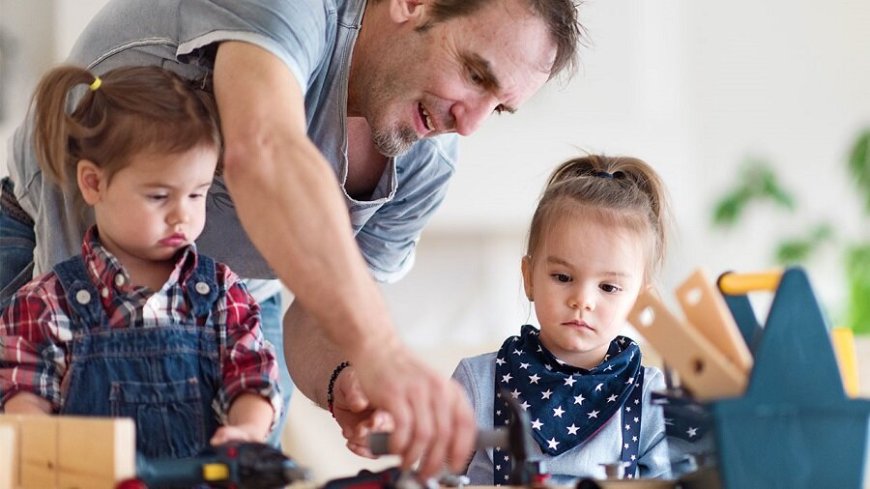How to help child overcome negative thoughts
The way of thinking significantly affects the feelings and behavior of children. Unpleasant, overly critical thoughts can harm

Tips for parents that will help save children from anxious, pessimistic thoughts
The way of thinking significantly affects the feelings and behavior of children. Unpleasant, overly critical thoughts can harm a child's self-esteem, interfere with a child's relationships, and make him retreat without reaching his goal.
Sometimes this bleak, pessimistic style of thinking gives new thoughts the status of a self-inflicted event or a realized fear. For example, a child thinks and imagines: œThe other children hate me. All because I'm probably clumsy." She avoids eye contact and keeps to herself both on the playground and in school corridors. Her behavior does not allow her to make friends and confirms and strengthens the conclusion that no one loves her.
Unreasonably negative attitudes often lead to behavioral problems that might not otherwise exist. Tantrums, disobedience, sibling rivalry are just some of the problems that usually arise under the influence of negative thoughts.
However, with some practical techniques, children can learn to recognize and change their negative thinking habits.
Examples of negative thinking
There are several types of negative thinking. Some children have a negative attitude towards themselves, while others are afraid that something bad will happen. The following are examples of the main types of negative thinking and how it affects a child's behavior:
Generalization of a specific situation - the child was asked to give up his brother's turn in the game. The child thinks: "His brother always gets everything he wants like he is the boss, but I never get anything!" She is indignant and refuses to play.
Underestimation of one's abilities - when a child is told that he has solved a problem incorrectly, he breaks up his work and thinks: "I can't do anything right! I always get only wrong answers!".
Exaggerating the importance of the situation - the child learns that he gave two wrong answers out of ten in the math test. She concludes: "I can't solve math problems" and refuses to do homework in this subject in the afternoon at home.
Predicting that something bad will happen - the child thinks about the speech he has to give in front of the class tomorrow and worries: "I won't be able to do it, and everyone will laugh at me." She tries to convince her mother that she is not feeling well and must stay home tomorrow.
Focusing on the negative - the child got a good grade on the chemistry test, met a new friend at recess, and was selected for the brainstorming team. But when her mother asked how her day had been, she claimed that it had been a terrible day because she had forgotten her sneakers at PE. After that, she spent the whole evening frowning and shutting herself in her room.
We help put an end to negativity
The ability to solve problems related to negative thinking is part of a three-pronged approach to the development of children's psychological resilience. If you hear your child talking out loud too negatively, or if you observe behavior that indicates they are likely thinking negatively, it is important to address the problem as soon as possible. Here are five ways to help your child stop negative thinking.
- Acknowledge your child's feelings. When your child cries because of physical or emotional pain, instead of telling them, "You're okay," acknowledge their feelings. Be empathetic and make it clear that you're trying to find out and understand what she's feeling right now, even if her emotions seem raw. Say something like, "I can see you're upset" or "I understand you're nervous." When children feel that their feelings are accepted, valued and taken into account, they begin to search for constructive ways to cope with unpleasant emotions.
- Gently point out to the child that his thoughts may be wrong. The ultimate goal should be for the child to be able to recognize and correct their own negative thoughts, rather than relying on you. To help her come to her own conclusions, ask questions that help her understand that her thoughts may be wrong. For example, if your child says that he is doing everything wrong, tell him: "Remember those moments when you were sure that you were doing the right thing." Help her identify some exceptions to the rules so she can see that her opinion is not entirely correct.
- Consider the problem from different points of view. Sometimes the best way to separate emotions from thoughts is to ask, "What would you say to a friend who would think the same way?" You can also ask the child what his favorite cartoon character or superhero would do in his place. If the child considers the problem from a different angle, it can change the direction of his thinking.
- Replace negative thoughts with more realistic ones. Help your child form a more realistic worldview. Instead of telling herself, "I can't do anything right," she'll find it helpful to tell herself, "Sometimes I make mistakes, and that's okay." Teach your child to treat himself with the same kindness and respect that you hope he treats other people with.
- Solution to the problem, what to do next. Help your child turn negative thoughts into positive actions and proactively deal with the problem of choice when dark thoughts come to him. For example, if she thinks she's going to fail a physics test, get her to take steps to prevent that from happening, such as having her repeat the subject or ask questions if she's not clear about something. Teach your child to make constructive decisions, even when faced with difficult tasks and unpleasant situations.
